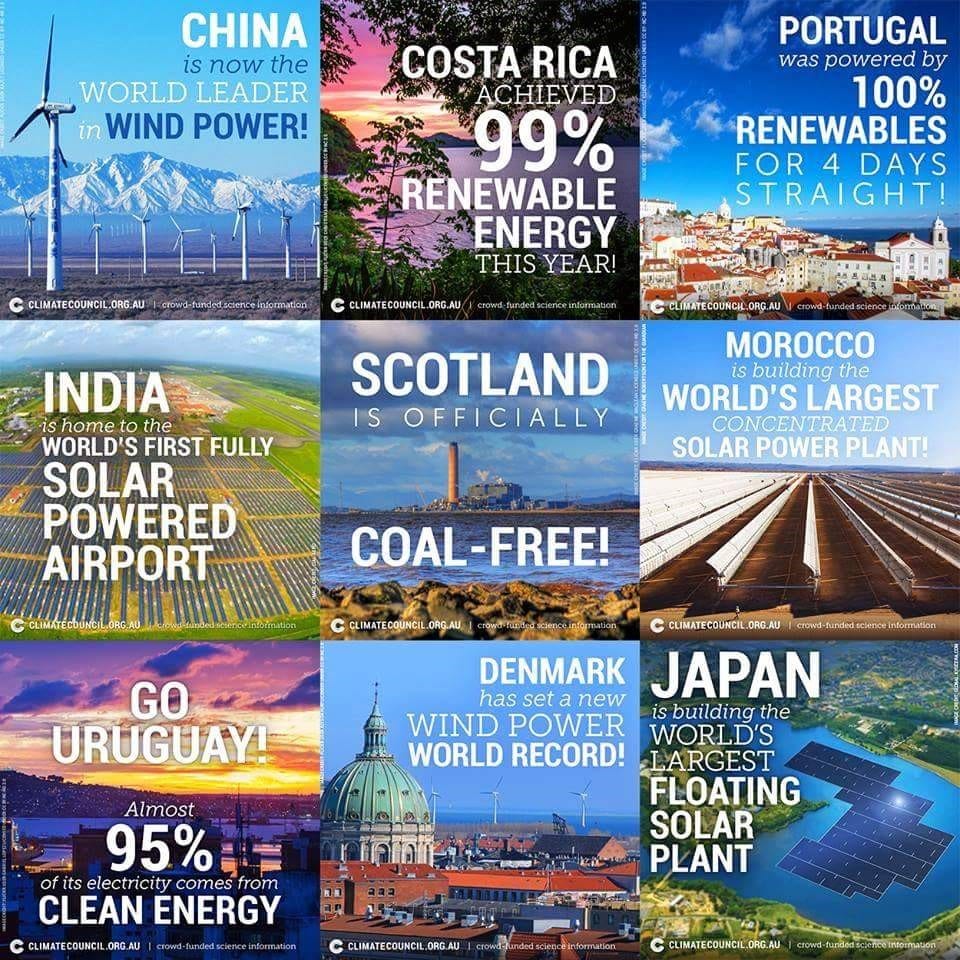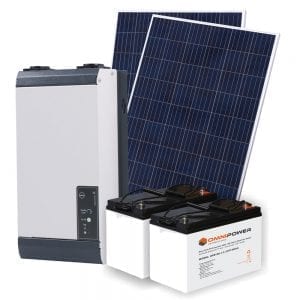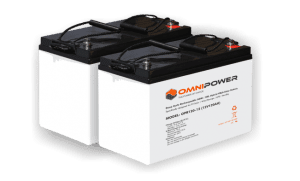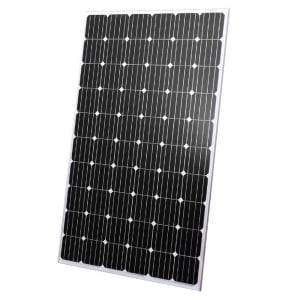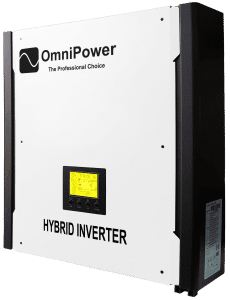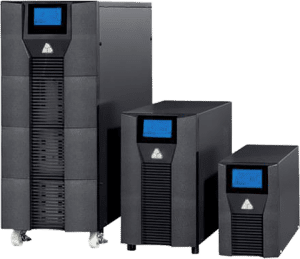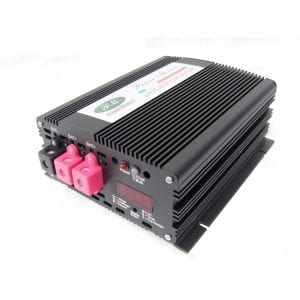Gamers will be familiar with the title of this piece, however the monsters and challenges they face in this game pale into insignificance when compared to the challenges that we, as a nation, face.
Once our illustrious National government realized the impact this folly (which they were forewarned about in 2003) would have on our country and its long term economic future, it was too late. Mines, manufacturers, resource processing plants and many other manner of high-volume electricity users had throttled back and in some cases, shut-down plants and have sought greener pastures.
Earlier in May 2016, our illustrious Number One, expressed his “happiness and excitement” for the achievement of the end of load-shedding in South Africa on a recent visit to Megawatt Park, Sunninghill. He proudly announced that Eskom was in fact so overstocked with electrons that they were now in a position to export to our neighbours. He also mentioned how happy the Eskom employees were, which is little wonder when the average annual salary at Eskom is R630,000 or R52,500 per month. I am fairly sure that the labour force out at the various power stations are not earning anywhere near that, which means Megawatt Park employees are, in fact, smiling all the way to the bank and not because of the end of load-shedding.
Although Eskom would like to attribute the absence of load-shedding as an achievement of their turnaround plan, the majority of this “success” is due to a massive drop in demand. It is estimated that approximately 10% of the total demand was wiped-out between 2013 and 2015. Luckily for Eskom, because their electricity production capacity also dropped from 37,745MW to 34,345 MW.
In effect, Eskom have been successful in avoiding declaring the reality of the dire circumstances through:
1) Load-shedding – A schedule of planned and communicated electricity outages to reduce the load on the overburdened grid.
2) Price increases- The price of electricity has more than doubled from 2008 to 2015 from 19c/kWh to 48c/kWh.
Large customers have gone elsewhere, South Africa’s economy is in its worst condition in decades and Pretoria are patting themselves on the back for ending load-shedding. Sadly, whilst load-shedding may be dead and gone AS A POLICY, I don’t believe that unscheduled power cuts can ever be declared impossible. In my view this is political rhetoric merely playing with the semantics of “load shedding”.
Suffice to say that in the Johannesburg region, we currently experience 11 power outages (NB. Not load-shedding) per day. Admittedly, some of these involve only one or two streets, however some are quite widespread as we saw this last weekend 20-22 May 2016, where a vast area of Johannesburg experienced long periods (in excess of 5 hours) without power. One area in Bryanston has now been without power for two days due to a transformer failure, no doubt it failed as a result of inadequate maintenance.
In effect, we as the consumer have gone backwards as a at least with load-shedding, you would be advised in advance and the outage period would be more or less in line with the prediction. Now, the outages are as and when something fails or the utility decides to summarily cut the power. Any attempt to establish the duration and cause of the outage from your friendly call centre will be met with routine vagueness.
It is inevitable for any power utility across the globe to have a maintenance backlog, usually due to budgetary and human resource constraints. In 2008 the backlog expressed in monetary terms was R27,4 Billion and has grown to a whopping R68 Billion in 2016. This, in a utility that is in fact producing less electricity than in 2008 down by approximately 9% in 2016 and the price per kWh up by a staggering 152%.
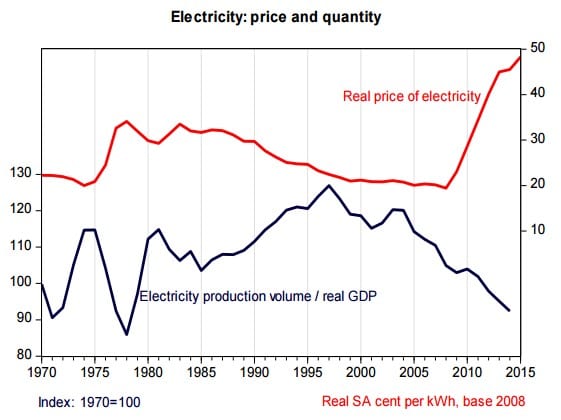
The above graph is a lesson in unsustainability in the electricity business, sharply declining production against what should be an ever increasing demand. Similarly, exponential price increases far in excess of the inflation rate. Appears electricity is becoming an LSM6-10 luxury commodity if one looks at this trend, perhaps Eskom should consider privatising into Richemont alongside their other premier brands like Cartier, Mont Blanc etc.
Thankfully, we as South Africans either make a noise or make a plan depending on your cultural background. We have been making a lot of noise for a long time, witness the ongoing service delivery strikes, but it seems Pretoria have other more pressing issues of an internal nature and thus respond with more empty promises.
So we are left with the only other option, and that is to make a plan to provide our own energy, which in essence implies solar energy for most small scale applications. However, the applicable legislation is as follows:
The Small Scale Embedded Generators (SSEG), in this case Photovoltaic solar panels with inverters etc, national standards have yet to be published and are more than 12 months overdue. The Department of Energy and NERSA are in the process of defining these standards and for very good cause. Should they have not been diligent in this process, then any sub-standard equipment could be connected to the electricity grid with potential disastrous results.
The disasters referred to could extend to a disruption of the electricity grid on a national basis or even the potential injury or death of utility technical personnel performing maintenance on the grid. Illegally connected “generators” could still be generating power, so albeit the system has been shut down, power could still be present, resulting in some severe consequences.
Additionally, there is currently no revenue recovery mechanism in place, thus any power you put back into the grid will just be absorbed with no benefit to you. In fact, in some instances the power you put back into the grid can be added to your bill.
This applies only to grid-tied systems and mercifully, we can employ point 2 above for “own use” in the interim and hopefully, during the course of 2016, the SSEG standards will be published. This will allow connection to the grid with some form of recompense for the power you put back into the grid and don’t use. The real attraction of being grid-tied, is that effectively, you use the national grid as an energy storage device rather than having a bank of batteries to store power generated by your solar panels during the day. This is the theory at least, however, the tariffing of what the utility will pay you for your power is also to still be defined in SSEG.
Having briefly set the scene from a “current state-of-play” perspective, it is clear to see that we have an electricity volume problem, despite current political sound-bites and we have ever-burgeoning increases in electricity pricing. Therefore, we need to explore ways to mitigate power outages, previously known as load-shedding and we need to find a way to reduce monthly electricity bills. Both of these requirements can be met with a Standalone PV Solar System, but where do you as a domestic or commercial user start?
Standalone PV Solar System
Any decent PV solar company will advise the prospective client to firstly reduce their overall load or electricity requirement by replacing at least the most regularly used lights in the building with LED or CFL globes. Lighting in domestic applications makes up to as much as 25% of the total electricity bill and by using a 7W LED globe you can obtain approximately the same amount of lighting as conventional 50W incandescent globe. Admittedly, LED globes are expensive, however they not only use less electricity but also last up to 10 times longer than CFL globes and as much as 40 times longer than incandescent globes. The company proposing your PV solar solution, should do these calculations for you once you have identified the relevant lights used to show potential savings.
The second area where substantial savings can be made is with water-heating, the average household uses 35% of their total electricity consumption to run electric geysers. Whilst solar water geysers are comparatively expensive, like LED lights, they amortise themselves in approximately 3.5 years. Thus by spending R20,000 on a solar water geyser today may seem expensive, calculate what one-third of your electricity bill is to see if it makes financial sense.
The next logical step in the process, having reduce your overall electricity usage, is to conduct a power audit at your premises. This will involve installation by the proposing PV solar company of a monitoring device for a period, recording the average and peak demands. Having measured this after the installation of the LED lights and the Solar Water geyser, the sizing of the solar or standby system will be substantially smaller and hence less expensive.
Once a peak-demand baseline is established, the PV solar company will conduct a site visit to establish the physical dimensions of your roof area, dimensions and distances of inverter/battery placement and connection to your electrical Distribution Board (DB) as well as considerations such as slope of roof angle, directional bearing of the proposed roof and multiple other parameters.
From this data, the solar company will develop a custom design that suits your specific building and power requirements. All too often we get asked the question “How much will it cost for me to go solar?” This is a very dangerous question to answer because, albeit that you have a 300 sqm house, with mom, dad and 2.5 kids, your particular energy usage is unique, even if the house next door is identical with the same occupants, their electricity usage can be substantially different. Similarly, the neighbours long term objectives could be different to yours, you may wish to get off the grid completely, whereas they may only wish to reduce their electricity bill by 50%. Some clients don’t even want to deploy solar initially, merely provide a back-up solution for power outages (remember Load-shedding is dead and gone, yeah right).
Back-up System
The schematic above refers to the simplest iteration known as a Back-Up System, an inverter and battery bank that is installed in-line to the distribution board of the home or business. This system effectively takes grid-power and stores it in the battery and monitors the presence or absence of grid-power. Should the grid fail, the system automatically switches in roughly 20ms to the battery bank and continues to provide power from the batteries. To contextualise the switch-over time, you will not even notice that you have switched to back-up power, and for rugby fans, DSTV does not reboot, so you won’t miss the match winning try. Naturally, this would be less-expensive as there are no solar panels present, however it is advisable to design the Back-Up System for scalability to allow for the addition of solar later.
Upon conclusion of the design , the solar company should provide you with a firm quote itemising all of the various system components and related services, such as installation, commissioning and maintenance. That old Latin warning applies “Caveat Emptor” or Buyer Beware. The selection of products and quality of the services will make a world of difference to how your solar system ultimately performs. The following are some questions you should ask:
Solar Panel Considerations
- Can the roof carry the additional weight of the proposed solar panels?
- If this has not been considered in the design, show the fellow the door.
- Is the mounting system for the panels non-penetrative?
- Sophisticated mounting systems obviate roof damage and hence leaks.
- What is the corrosion guarantee of the mounting system?
- Expect at least a 10 year lifespan.
- What risk is there of lightning damage and what can be done to mitigate this?
- Robust earthing is essential, however, you may add further lightning protection but it costs.
- Are the solar panels being proposed Tier 1 panels and what guarantee do they have? The answer should be yes and the guarantee should be 25 years.
- What is the linear performance guarantee, ie. what output degradation should be expected over the 25 year lifespan.
- Yield should be 80% or higher at the 25 year mark, thus about 0.4% per annum.
Inverter Considerations
- Confirm that the inverter size ie. 4kW, 10kW is adequate to serve your electricity load.
- Click here to download our “Appliance Calculator” to help you size your load.
- Ensure that the inverter proposed is a pure sinewave inverter.
- Modified sinewave inverters can be problematic with some appliances such as LED TV’s.
- There are 72 different inverter manufacturers products available in S.A. make sure the supplier and manufacturer have a good reputation and installed base.
- Names such as SMA, Outback, Omnipower, Victron and Studer are well established brands and most carry local NRS approvals.
- Does the inverter make use of transformers internally?
- Inverters that employ transformers are usually more resilient to power spikes etc.
- What is scalability of the inverter, both in terms of connecting serially to more inverters as well as the possibility of doing both off-grid and grid-tie ie. hybrid inverters.
- Some inverter manufacturers are offering hybrid inverters meaning the inverter can be grid-tied as well as offer off-grid functionality ie. excess power can be returned to the grid or stored in batteries by one single inverter. Previously, two separate inverters were required. This also allows flexibility of functionality in that you could start with having a simple backup system with batteries, no solar panels to cater for power outages and then later add the solar and grid-tie component. Alternately, one could start with grid-tie and solar, no batteries and then at a later stage add the back-up component of your own battery bank, all using one single inverter.
Grid-tied PV Solar System with hybrid off-grid functionality and Back-up
Battery Considerations
As described in the previous paragraphs, batteries are technically only needed for back-up and power storage in scenarios as follows:
- When you are effectively “tanking” power from Eskom into the batteries to provide power when there is a failure, thus, pure back-up. No solar panels are in installed in this scenario.
- When you are in an area where there is no grid power at all and you therefore use solar power during the day and store any excess in the batteries for use at night. Typical in a rural scenario.
- Where you have grid-power and have solar panels to reduce your Eskom bill plus battery back-up to provide power when Eskom has an outage. This scenario may also become relevant where you are putting excess power back into the grid at say 50 cents per kWh credit but then having to pay R1,50 per kWh when you use that power at night. It may be more cost effective to store your anticipated evening power demand in batteries first and once they are topped up, then feed the excess power into the grid for credit. We will only know these realities once NERSA’s SSEG initiative has published their standards and the related net-metering tariffs ie. what you earn back in credits and what you pay.
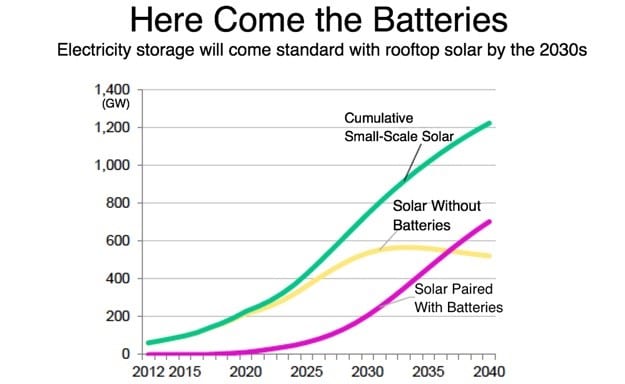
Source: Bloomberg
Bear in mind that albeit that you pursue solar power to reduce your bill and the demand on Eskom, your carbon footprint etc. you will be charged an additional surcharge for that pleasure. This is to protect the coffers of local municipalities who derive the bulk of their income from selling electricity which, apparently, they often don’t pay Eskom for, hence another reason for the crisis at Eskom.
The emotional response to this is “I want to get off the grid completely” and we as a company would be more than happy to help you with that, however, it would be difficult to make the business case in most instances. Providing a complete off-grid system requires accurate analysis of your particular usage plus we would have to factor in adequate storage for a suitable “autonomy” period ie. when there are cloudy or rainy days and limited sunlight, the battery banks would need to be substantial.
The sensible approach to take would be to provide a solution that is designed for self-consumption today ie. independent of the grid BUT carries all the necessary regulatory approvals and the technical scalability for grid-tie later. This would either be a standalone back-up system comprised of an inverter and battery bank or alternately the next step up, the standalone PV Solar system which would see the addition of several solar panels. The latter system would have the added benefit of providing some of your power requirements for both your household or business load as well as charging the batteries but would put no power back into the grid.
We all are already using solar in one form or another, just not in the scale or manner that we will in the future. Unlike fossil fuels, solar does not have a peak limit and is not a limited resource, thus more comparable to silicon chip technology. With ubiquity comes price contraction and in turn wider acceptance resulting in further funding of R&D and greater performance from solar panels.
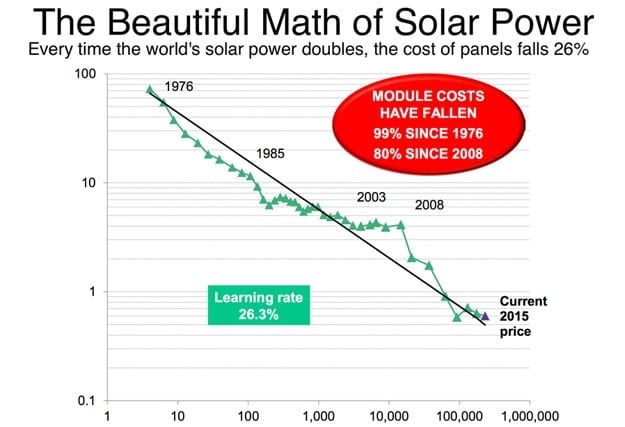
Source: Bloomberg
Not convinced yet?
